All over Britain recalled reservists, territorials and volunteers were being trained before being sent to support the regular army at the front. Between late 1914 and mid 1915 thousands of troops were billeted in Dorking.
In late 1914 men from the Surrey Yeomanry arrived. In January 1915 they were joined by troops of the 179th Brigade of the 60th (2/2nd London) Division of territorials. These include units of the London Scottish, the Civil Service Rifles and the Queen’s Westminster Rifles, the Royal Army Medical Corps and the Royal Field Artillery.
Empty shops and houses were requisitioned and locals housed those who could not be billeted in empty buildings. Townspeople welcomed the troops but were urged not to buy drinks for the men. Local vicars encouraged the giving of socks, scarves, tobacco or chocolate instead, and in order to prevent drunkenness licensing restrictions were improved. From January 1915 pub landlords were not allowed to sell alcohol before nine in the morning or after nine at night.
Troops drilled at Denbies, went on route marches up Box Hill and to Guildford, Headley and Leith Hill, and carried out tactical training exercises at Leigh. But the influx of men put a strain on local services. In January 1915 the council sanitary inspector served notices on the owners of premises where troops were billeted, requiring them to provide latrines as a matter of urgency. The council had to pay for the removal of horse manure and human excreta from encampments. And the town baths in Station Road had to accommodate hugely increased numbers.
But troops were good for business and when the last troops left at the end of June, the council lobbied the military billeting authorities for the town to be sent more.
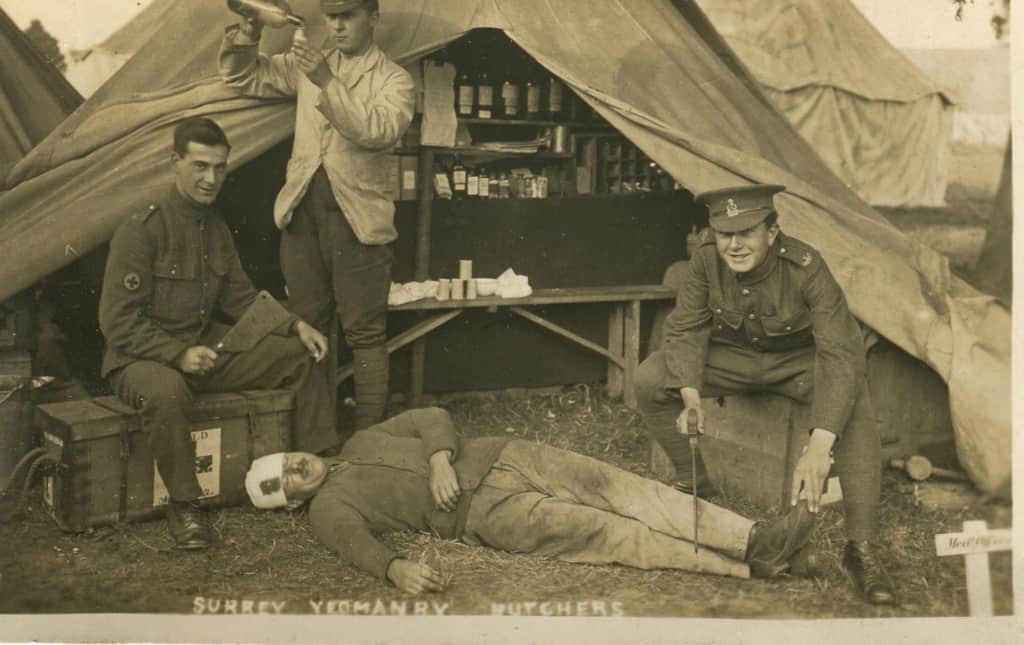
Members of the Surrey Yeomanry larking for the camera at Deepdene Camp. The photograph is captioned ‘Surrey Yeomanry Butchers’. The Yeomanry had often held training camps at Denbies before the war. Its headquarters in 1915 was at the Public Halls on West Street. Troops occupied parts of the Deepdene, the new Betchworth Golf Club clubhouse, and Sondes Place with horses stabled at the chalk pits below Denbies and at Sondes Place Farm.
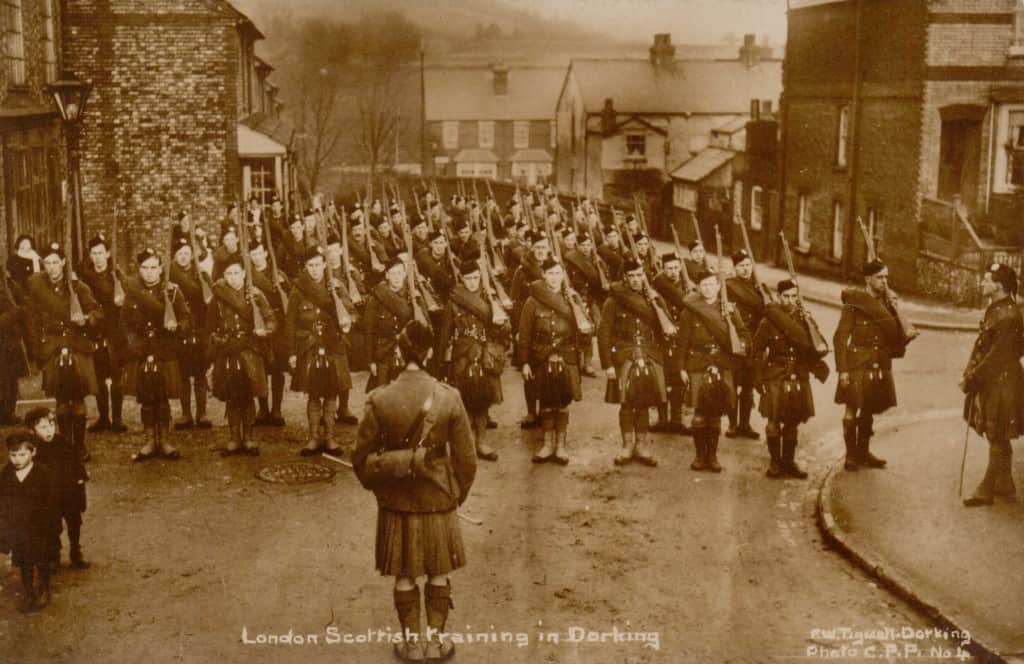
The London Scottish in Ansell Road. They were followed by the 13th (Reserve) Division of the Argyll and Sutherland Highlanders who arrived in April. In May 1915 the Council arranged for the provision of soap and towels for the men at the town baths on Wednesday evenings and Sunday morning, and for two workmen to clean and clear the baths, at a cost to the Regiment of £1.00 weekly. Similar arrangements were made for the Royal Field Artillery and the Surrey Yeomanry.
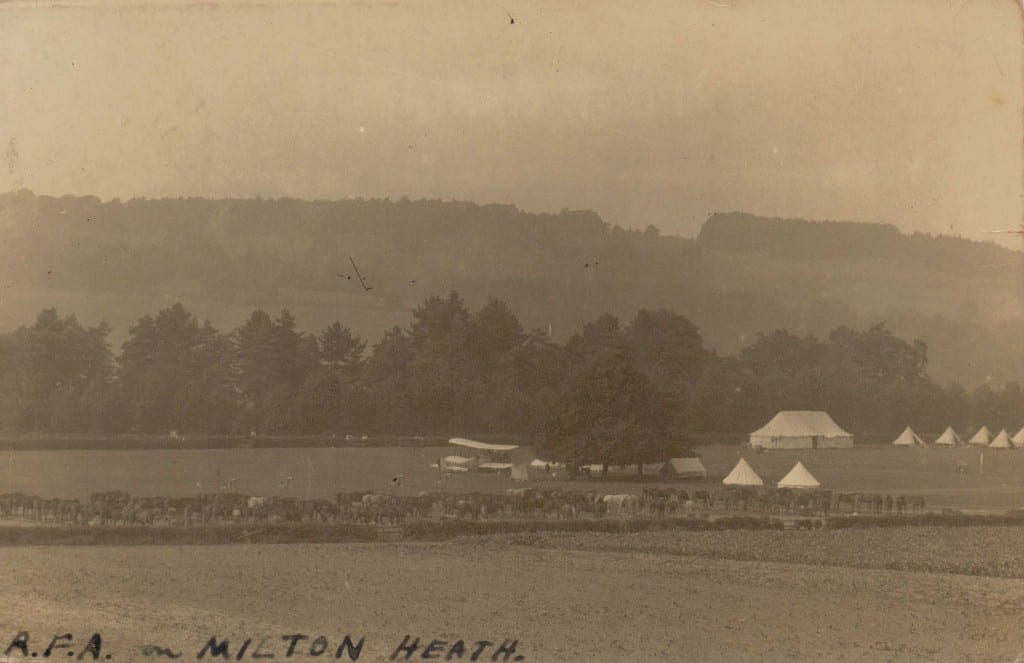
The Royal Field Artillery encamped on Milton Heath. The large number of horses that pulled heavy field guns and supplies were quartered in Mr Broome’s field in Westcott and on the common there. The movement of these animals and heavy equipment caused serious damage to footpaths and roads.
An anonymous London Scots soldier named ‘Wullie’ wrote in ‘The London Scottish Regimental Gazette’ of his impressions of Dorking in 1915:
It has gotten twa railway stations, a wheen Kirks, and an awful lot of public hooses, ane wi a great muckel cave awa doon doon under the foundations’.
(A reference to the caves lying beneath many Dorking shops and inns.)
Some soldiers, he reported, were lucky with their billets and found themselves in fine parlours with kind-hearted landladies; others slept on the floor of an empty sweet shop. Rations were doled out initially on the street corner, where dogs congregated in hope.
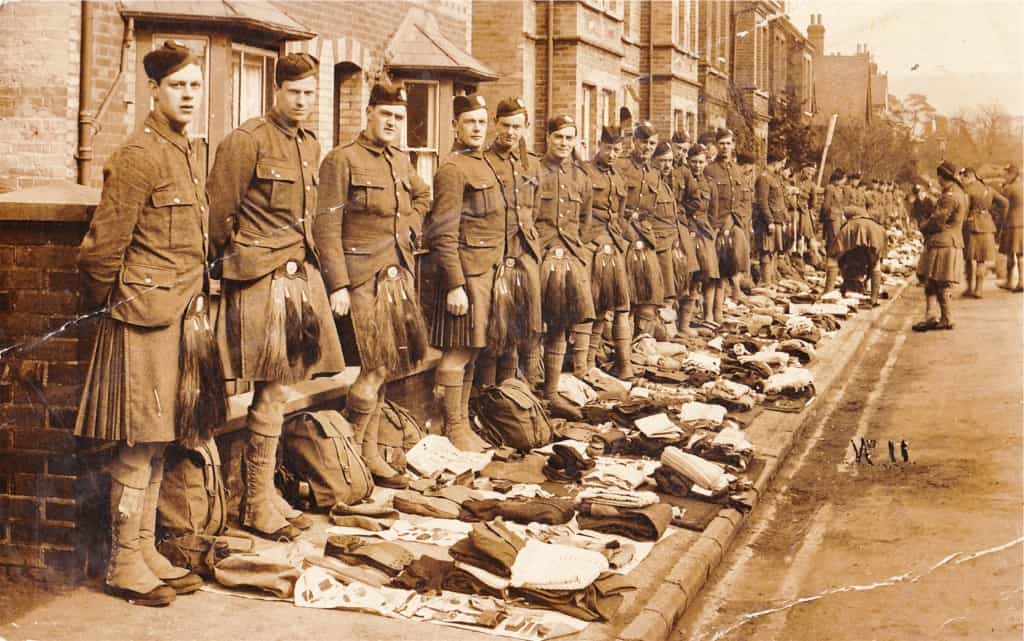
Shortly after arrival chicken-pox broke out amongst the troops: ‘Dear Jock – Ye ta’k aboot fowls? You should jist see the Dorking chickens! The Congregational Ha’ is fu’ o’ them, graand birds! Well guarded in the red-brick buildings, and o them has been sent awa’ tae the hospital’. ‘A’ company was quarantined in the Congregational Hall. There they upset the minister in the church next door with their piping during services. But the people of Dorking were generally fond of the bagpipes. The correspondent writes of six or seven pipers resident and playing in the town: ‘no’ bad for Dorking eh?’ ‘There’s ane o’ them that is daein’ roarin’ weel doon at the Star and Garter, whaur he blaws his head aff every nicht to make the CO enjoy his denner!’
‘Wullie’ records that local women showered the pipers with gifts of ‘bawbees’, knitted ‘gravats’ and packets of ‘Scottish Abdullahs’.
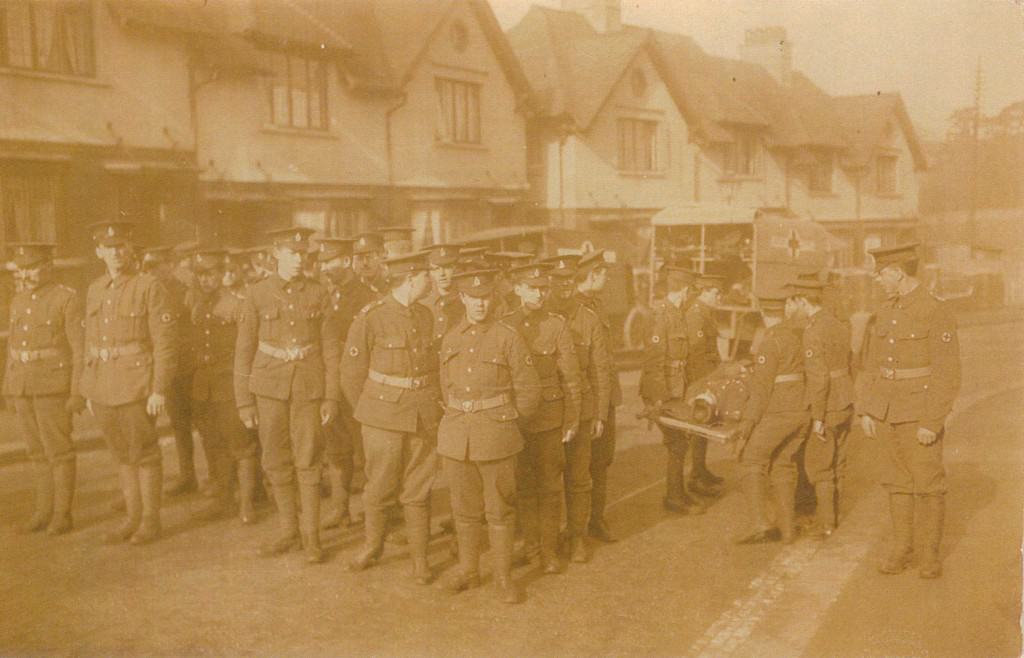
The Royal Army Medical Corps in training in Myrtle Road. The RAMC also practised stretcher drill on the slopes of Box Hill and Ranmore. The composer Ralph Vaughan Williams found himself posted to the town of his youth with the RAMC in 1915.
The following regiments were billeted in Dorking during the course of 1915.
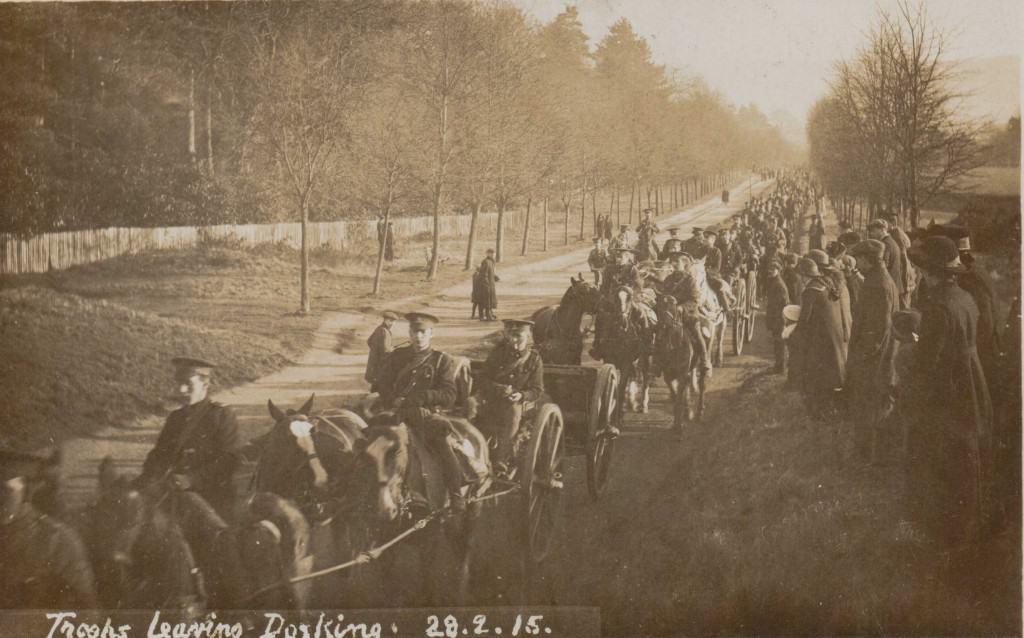
2nd Battalion. London Scottish – January – February 1915
The London Scottish had their headquarters in St Martin’s Church hall. The troops were billeted in empty houses or with local families.
They did their drills on Cotmandene and found the local countryside, particularly the hills, perfect for training – although they had to contend with sudden snowfalls.
The photograph shows the London Scottish leaving Dorking 28th February 1915
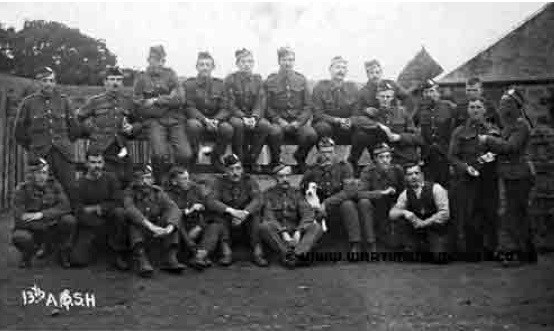
13th (Reserve) Battalion Argyll and Sutherland Highlanders – April – June 1915
Dorking Urban District Council allowed the Battalion to have exclusive use of Dorking baths on Wednesday evenings from 6.45 to 9pm and on Sunday mornings from 7 to 9am. In return, their Commanding Officer paid £1 per week to provide soap and towels for the troops. One or two of the men were also expected to provide cleaning services.

Royal Field Artillery – October 1915 – January 1916
The Royal Field Artillery were billeted at a camp in Milton Heath, which required the creation of a new sewer.
Their horses were quartered in Mr Broome’s field in Westcott Road, with occasional transfer to the ‘waste’ ground on the other side of the road when his field was exhausted.
Next : To serve or not to serve

